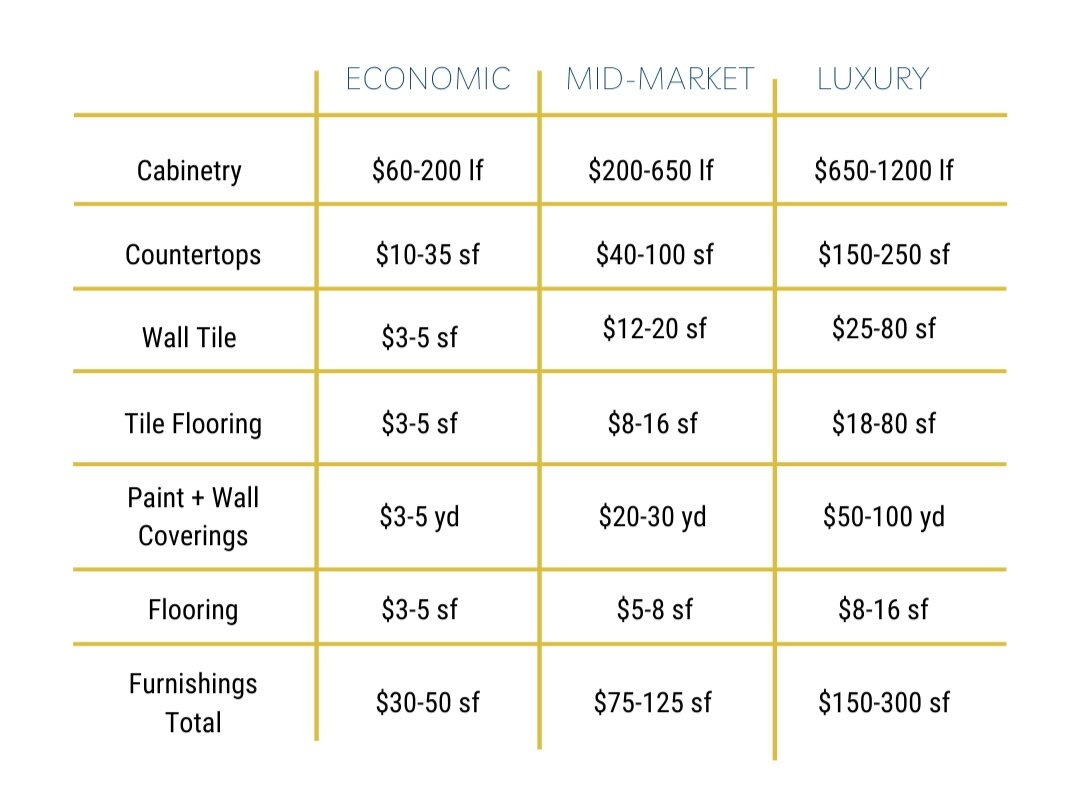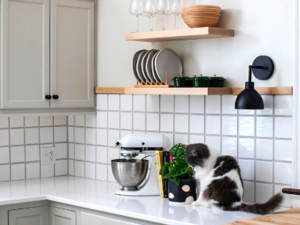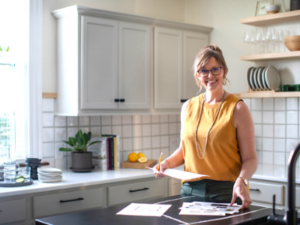Budget and Timeline Tips: Before Your Project Begins (Part 2)
September 9, 2020
If you missed it, PART ONE of this blog series in How to Construct a Budget and Timeline for your next design project, we covered a lot of the fun planning. Now, let’s get into the necessary but difficult decisions you’ll face when determining where you stand with money and time.
Let’s get into it.
Face It: Your Design Project is an Investment
In general, it’s good to have a grip on reality, especially when considering every aspect of your design project. The reality is, your next project may cost some big bucks. Wait! Before you stop reading, hear us out.
When tackling an investment it is best to strategize from the start.
Start by estimating the cost of your redesign by recording the dimensions of your space in square or linear (usually for cabinetry) feet. If you have forgotten the lesson from 3rd grade geometry, below is an example of how to record your dimensions:

With your calculations complete, you can then define the cost of your project by its surface area.
Just because you have a large surface area, that doesn’t absolutely mean your project will cost more.
The increase in cost is typically directly influenced by the kind of materials you select. These can be outlined as Economic, Mid-Market, and Luxury materials.

Understand the Complete Scope of Cost
No one likes surprises. That’s why you’re here, right? You want the full picture before you get started on your design project. In the same vein of gripping realities, there are some costs that may catch you off guard. It’s important to be aware of the entire process of your project from the very beginning to help prevent the money you might have to spend in addition to the materials for your space. Creating a budget is without a doubt essential to your project, and creating space to cushion unexpected charges is crucial.
The following are examples of cost surprises:
-
If your project will involve demolition (read: if you’re moving walls or restructuring the foundation), then you’ll need to think about the disposal of debris. Research your city and its regulations as you may need to pay for a permit for this kind of work.
-
Projects that require heavy duty renovation or even just a repaint may require the removal of furnishings for their preservation. You may want to consider paying for a storage unit while this part of the project is underway.
-
When you’ve completed the majority of your project, you may find that its bare walls and bookshelves keep it from looking complete. Consider allocating 10-15% of your overall budget to finishing touches.
Keeping Time on the Mind
You know what they say: good things take time.
A timeline is not necessarily made up solely of the time in which it takes to install your new countertop. You also have to take into account the time it takes to select the right materials and have them shipped to your home.
Depending on the kind of project you’re completing (Economic, Mid-Market, or Luxury), selecting materials can take anywhere from one week to upwards of three months. It’s not just about what looks right! It’s about what is available and how much of it you will need.
Completing the entire project can take anywhere from six weeks to more than six months. Times vary by project, of course. But a general rule of thumb is to not expect an overnight HGTV home renovation. It’s easiest for everyone if we create real life timelines for your real life project.
Organize Your Design Project by Phase
The ways a design project can overwhelm a person are not lost on us. Breaking down your project’s timeline by phase is the easiest way to get a true overview into the plan, step-by-step.
You can visualize it as follows:
-
Phase 1: Outline your budget and record your objectives. Assemble your team.
-
Phase 2: Gather inspiration and begin sourcing materials.
-
Phase 3: Make decisions on the materials you will incorporate. Obtain estimates for any trade labor that your project needs.
-
Phase 4: Place orders and receive the deliveries. Oversee the trade labor.
-
Phase 5: Installation and finishing touches. Enjoy your space, and take pride in all of your hard work!
Seems simple enough, right? The truth is, some of these phases can last up to 16 weeks! Like I said, good things take time. Allow your project to mature organically, giving it room to evolve and stall if needed. The goal is to keep a consistent schedule, but life happens and we have to account for that.
It’s Design Time
Did you know there are about 400 design decisions to be made per room? “Decision Fatigue” is a real thing, and working with a designer is a great way to alleviate some of the decision making responsibilities.
Are you already feeling fatigued, and you haven’t even started? Don’t worry – we get it, and we’re here to help in any way possible.
The space of your dreams is more than possible, and discouragement is a natural feeling we stumble into at times. We want to guide you throughout your project, whether through our guide or through one-on-one consultations.
In our next blog, we’ll talk about what it’s like to work with an interior designer and how you’ll know if you’re ready to collaborate.



